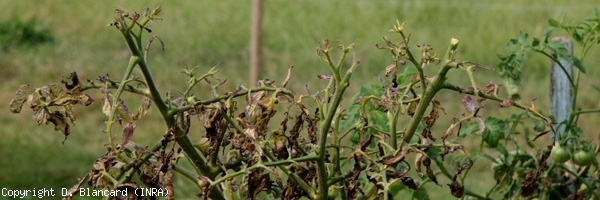
Phytoplasma diseases
The phytoplasmas are likely to attack more than 700 plants, cultivated or not, both woody and herbaceous, especially dicotyledons. They have an extremely small genome. The symptoms they cause are relatively typical, but they can differ between species: reduced plant growth and shorter internodes, yellowing, anthocyaninization, leaf deformations, morphological aberrations of flowers
They are disseminated by biting-sucking vector insects during their feeding activities: leafhoppers, fulgores and psyllids belonging to the order Hemiptera, and more precisely to the Jassidae, Cixiidae and Psyllidae families.
Their detection in plants can be done in different ways: using an electron microscope, using mono- or polyclonal antibodies as part of Elisa tests, or by PCR.





